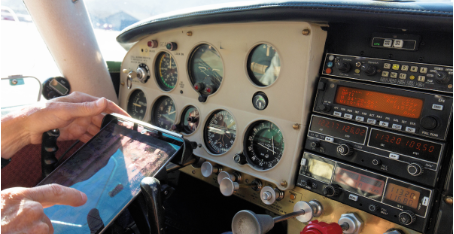Airports around the globe are transforming into smarter, more efficient hubs, thanks to advancements in Artificial Intelligence (AI). From streamlining passenger flow to enhancing security and operational efficiency, AI in aviation is at the forefront of creating seamless travel experiences. This article explores how AI is revolutionizing airport operations and the passenger journey, making air travel more efficient, secure, and enjoyable.
Enhancing Passenger Flow with AI
Managing the flow of millions of passengers daily is a logistical challenge for airports. AI-powered systems are addressing this by analyzing real-time data from various sources, such as security checkpoints, boarding gates, and check-in counters. By predicting congestion and adjusting staffing levels accordingly, AI ensures smoother operations.
For instance, AI-driven video analytics can monitor passenger movement and optimize queue management. These systems identify bottlenecks and recommend actionable steps, such as opening additional counters or redirecting passengers to less crowded areas. This not only minimizes wait times but also reduces stress for travelers, contributing to a better overall experience.
Smarter Check-Ins and Boarding
One of the most visible applications of AI in aviation is the automation of check-in and boarding processes. AI-powered kiosks equipped with facial recognition technology expedite identity verification, allowing passengers to check in and board flights with minimal human intervention. This technology not only reduces queues but also enhances security by verifying identities more accurately than traditional methods.
In addition, AI-based apps provide passengers with real-time updates on flight schedules, boarding gates, and potential delays, further simplifying the travel process. These personalized notifications ensure that passengers are well-informed, reducing confusion and enhancing satisfaction.
Predictive Maintenance and Resource Optimization
AI in aviation extends beyond passenger-facing applications to improve behind-the-scenes operations. Predictive maintenance systems use AI to monitor the health of critical airport infrastructure, such as baggage handling systems, HVAC units, and conveyor belts. By analyzing data from sensors and historical performance, AI can predict equipment failures before they occur, ensuring uninterrupted operations.
This proactive approach not only minimizes downtime but also reduces maintenance costs. Furthermore, AI helps optimize resource allocation by analyzing passenger flow and behavior patterns. For example, staffing levels can be adjusted dynamically based on real-time data, ensuring that resources are used efficiently while maintaining high service standards.
AI-Driven Security Enhancements
Security is a top priority in aviation, and AI is playing a pivotal role in making airports safer. Advanced AI systems analyze surveillance footage in real-time to detect suspicious behavior, unattended luggage, or unauthorized access to restricted areas. Facial recognition technology further enhances security by identifying potential threats with high accuracy.
Additionally, AI-powered screening systems streamline the process of checking passengers and their belongings. These systems use image recognition and machine learning to identify prohibited items quickly, reducing the time spent in security lines and enhancing overall safety.
Elevating the Passenger Experience
AI in aviation is not just about efficiency and security; it’s also about creating a more personalized and enjoyable travel experience. AI-powered virtual assistants and chatbots are available in kiosks, apps, and websites to provide real-time assistance. These systems can answer passenger queries, offer flight updates, and even provide recommendations for dining and shopping options within the airport.
Moreover, AI enables targeted marketing campaigns by analyzing passenger data to offer personalized promotions. For instance, travelers might receive discounts on duty-free purchases or restaurant deals based on their preferences and travel history, enhancing customer satisfaction and driving revenue for airports.
AI Integration for Custom Solutions
Airports are increasingly leveraging AI integration services to develop tailored solutions that address specific operational challenges. These services provide comprehensive frameworks that enable airports to combine AI with their existing systems, facilitating seamless data exchange and enhancing decision-making capabilities. By deploying such customized AI solutions, airports can address unique requirements, whether it’s optimizing baggage handling, improving energy management, or ensuring a more intuitive passenger experience. This level of integration ensures that AI is not just an add-on but a core component of airport operations.
Smart Airports of the Future
The integration of AI with the Internet of Things (IoT) is paving the way for smart airports. IoT devices collect vast amounts of data on passenger movement, resource usage, and environmental conditions. AI analyzes this data to optimize various airport functions, from energy management to crowd control.
Private wireless networks are another innovation supported by AI, providing secure and high-speed connectivity for critical applications. These networks ensure seamless communication between systems, enhancing the overall efficiency of airport operations.
Overcoming Challenges in AI Adoption
Despite its many benefits, the adoption of AI in aviation is not without challenges. High implementation costs, data privacy concerns, and the complexity of integrating AI with existing systems are significant barriers. Airports must invest in robust cybersecurity measures to protect sensitive passenger data and comply with international regulations.
Additionally, standardization across borders is essential to ensure that AI-powered systems work seamlessly in a global travel environment. Collaborative efforts among airlines, airports, and technology providers are crucial to overcoming these hurdles and realizing the full potential of AI in aviation.
Conclusion
AI in aviation is revolutionizing the way airports operate, creating smarter hubs that offer seamless passenger flow and enhanced experiences. From predictive maintenance and efficient resource allocation to personalized services and robust security measures, AI is reshaping every aspect of air travel.
As the technology continues to evolve, airports will become increasingly interconnected, setting new benchmarks for efficiency and customer satisfaction. By addressing implementation challenges and fostering collaboration, the aviation industry can fully harness the power of AI to transform airports into smarter, more passenger-friendly environments.
In the future, AI will not just be a tool but a cornerstone of aviation, enabling seamless journeys for passengers and efficient operations for airports worldwide.

